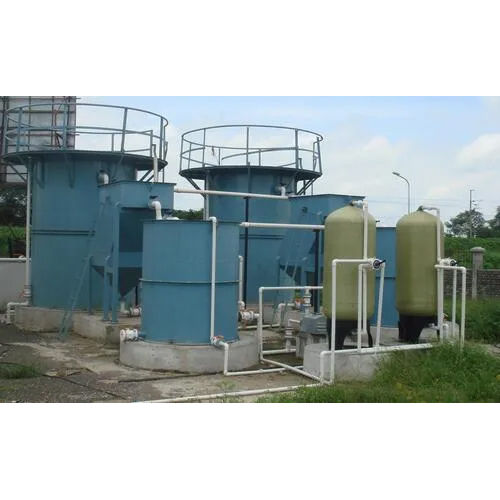Sewage Treatment Plant
Product Details:
- Application Industrial
- Material Steel
- Product Type Effluent Treatment Plants
- Power Source Electric
- Operation Type Automatic
- Weight 2500 Kilograms (kg)
- Color Blue
- Click to View more
Sewage Treatment Plant Price And Quantity
- 50000.0 INR/Number
- 1 Number
Sewage Treatment Plant Product Specifications
- Effluent Treatment Plants
- Electric
- 2500 Kilograms (kg)
- Industrial
- Steel
- Blue
- Automatic
- 1 Year
Sewage Treatment Plant Trade Information
- 100 Number Per Month
- 10 Days
Product Description
Wastewater from sinks, baths, washing machines, toilets and other appliances has to go somewhere. After traversing miles of sewer network, it ends up in sewage treatment plants whose job is to treat and discharge it.
ï
Sewage treatment plants collect, treat, and discharge wastewater, providing a service essential to environmental and public health.
ï
Without adequate treatment, sewage will leach into the environment and contaminate ecosystems. For example, sewage contains bacteria and chemicals that break down using oxygen in the water. In doing so, they use oxygen that fish and aquatic life needs to survive, so it needs treatment to preserve the ecosystem.ï
ï
Returning sewage/wastewater to a specified quality for safe discharge is the most crucial role of the sewage treatment plant.
Sewage treatment plants run wastewater through multiple treatment stages. After preliminary filtration, there areïthree main stages of wastewater treatmentï(primary, secondary, and tertiary), with the third stage reserved for polishing.
Preliminary treatment
ï
Sewage enters the plant network, pushed through various screens to remove large solids and waste, with grit removed by flow attenuation. The purpose of this stage is to filter the sewage of debris, sand, grit, and large particles.
Primary stage
The primary stage involves separating solids from liquids. The sewage is pumped into sedimentation tanks, where gravity forces solids to the bottom of the tank. The water is then released, leaving behind a sludge/slurry.
The sludge is a by-product of primary treatment and can sometimes be repurposed as a fertiliser, but it requires treatment such as de-watering to stabilise it. Incineration is the most likely destination for heavily contaminated sludge.ï
Secondary treatment
ï
Secondary treatment is the biological treatment stage that breaks down organic contaminants in wastewater.
The two most frequently used processes are activated sludge (aerated ponds) and filter beds (sewage tricked over aggregate), where 'good bacteria in the sludge aggregate break down the pathogens in the wastewater.
After secondary treatment, wastewater can sometimes be released, providing theres a low risk to human and animal life and the environment.
Tertiary treatment
ï
Wastewater is considered clean after secondary treatment, but tertiary treatment returns it to an even higher quality for release in protected waters.
The type of tertiary treatment depends on the wastewater. For example, suppose we should release wastewater into bathing or shellfish waters. In that case, it requires disinfection, and nutrients in the water, like phosphorous, must also be removed.
Types of tertiary treatment include:
- Microfiltration (where water passes through tiny holes at high pressure).
- Ion exchange (where ions in the water are exchanged for other ions).
- Activated carbon adsorption (which removes organics).
- Disinfection (where UV light or chemicals kill organic pathogens leftover).

Price:
- 50
- 100
- 200
- 250
- 500
- 1000+





 Send Inquiry
Send Inquiry Send SMS
Send SMS